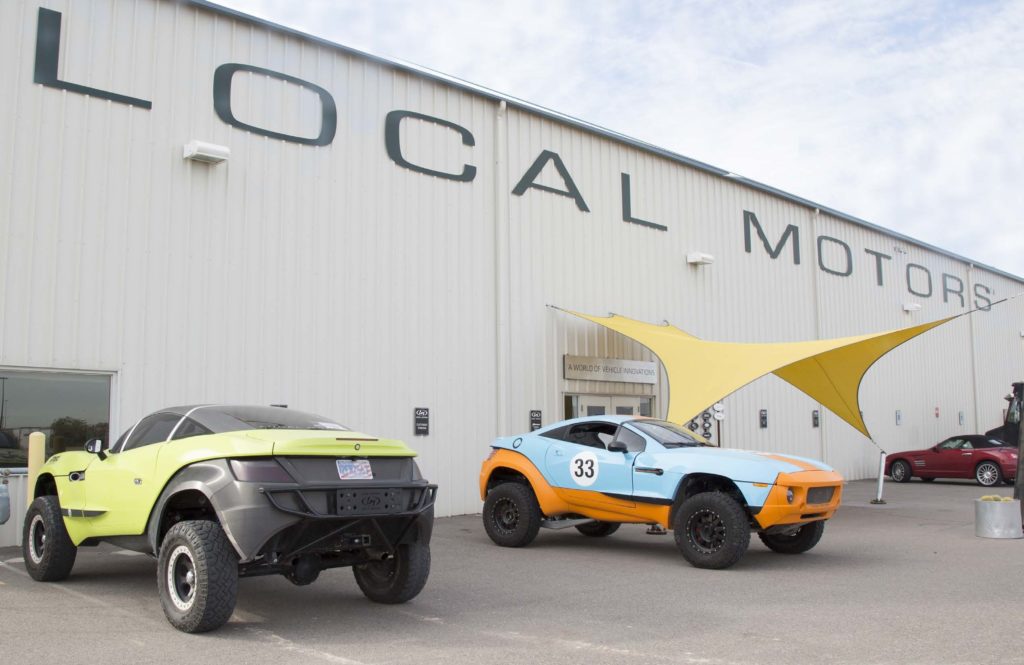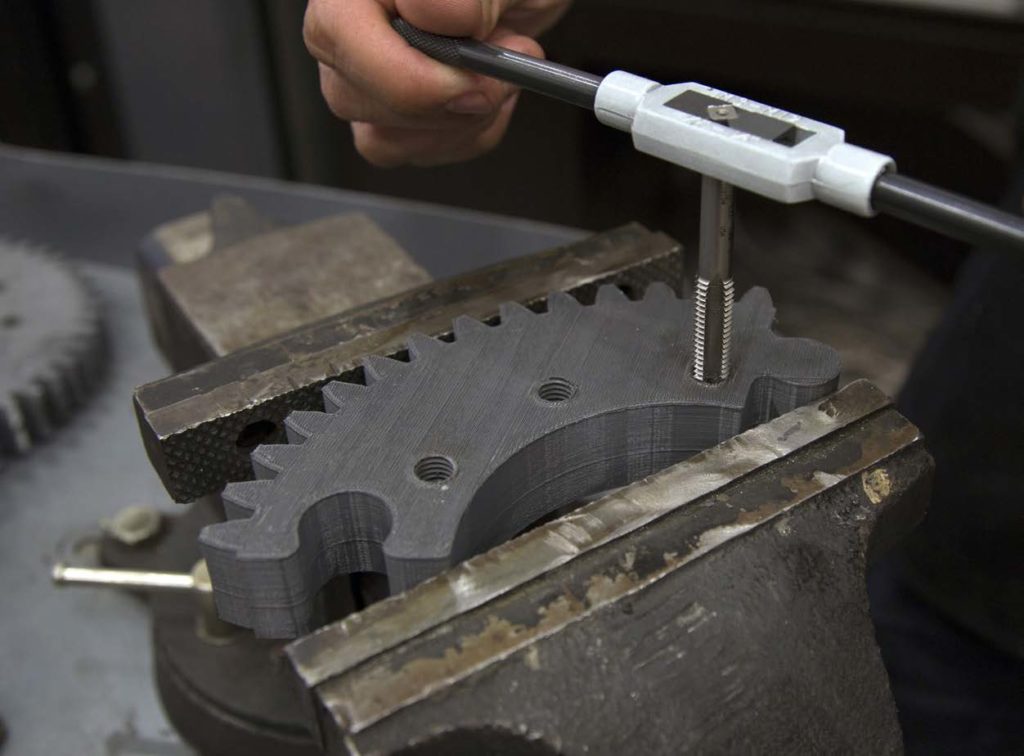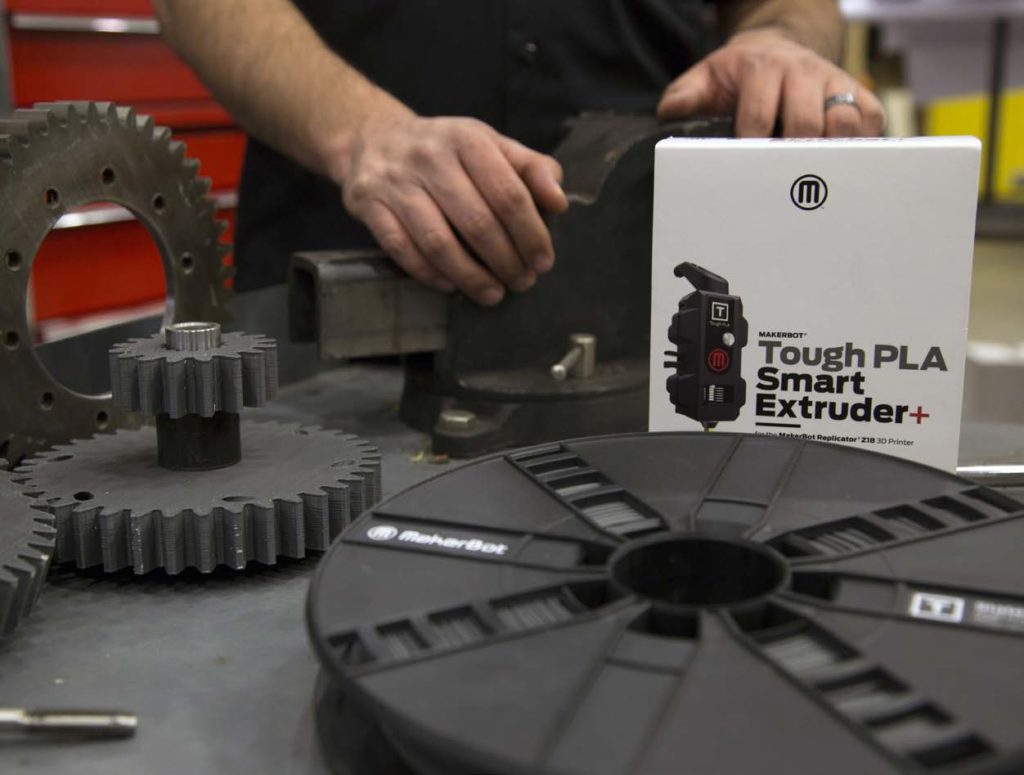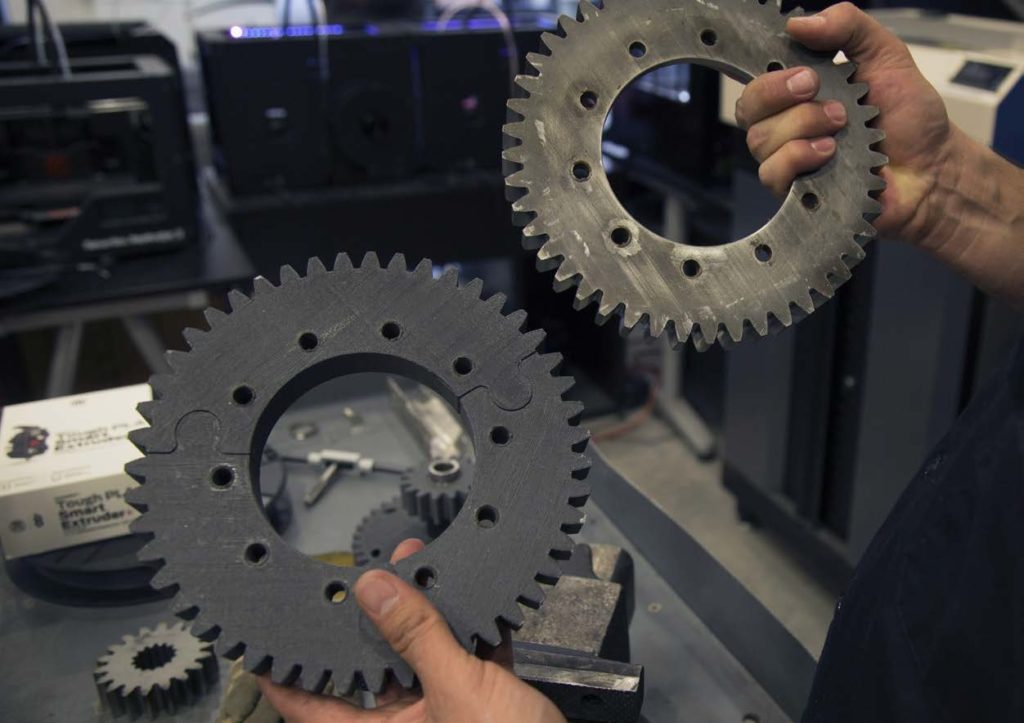Local Motors is known as a disruptive tech and automotive company, which designs and constructs vehicles. By putting together localized micro-factories which design and manufacture cars directly from the region they serve, the company has accomplished a small-batch, on-demand business model. In turn, this allows the company to maintain their focus on larger ideas while keeping their footprint small. The Olli self-driving bus, that is powered by IBM’s Watson, is just one of the many big ideas.
However Olli isn’t known as another autonomous vehicle – it is a complete new way of thinking about transportation. In order to construct disruptive products such as the Olli, the Local Motors team relies on particular tools to meet their product production and prototyping needs at each step of the process; tools like the MakerBot Replicator+, a cloud-enabled desktop 3D printer.
“We really don’t have the time to wait for the parts we need,” explains Alex Fiechter, Local Motors’ Director of Product Development. “We need to set the making of them in motion and forget about them while we work on other things. The MakerBot Replicator+ has been the ideal example of this ‘set it and forget it’ experience for creating 3D printed parts on both the production and the prototyping side.”

With streamlined 3D printing, Local Motors design engineers have the capability to reduce tooling costs in half, and reduce overall production time by an outstanding 95%. This was done all while keeping part production in-house. As a result, designers and engineers can focus on what really matters; and that is bringing big ideas to fruition quickly and reliably at the lowest cost for maximum ROI.
“There’s a huge difference between using an outside part manufacturer and having that capability in-house,” says Design Engineer Frederik Tjonneland. “The convenience of being able to print a part and have it in your hand in a couple of hours is not only cheaper, but also reduces lead times and allows us to iterate that much more quickly.”

However, the seamless journey of taking an idea, and heading right to the part-in-hand process begins well before a design is sent to a printer. It starts with the intuitive print preparation software, MakerBot Print.
Using a streamlined and powerful interface, MakerBot Print features a long list of professional-friendly capabilities under the hood. Others include native CAD file importing, automatic build plate arrangement, as well as the ability to save multiple build plates and assemblies as a single project, thus enabling critical collaboration and iteration.
Have a 3D printing project that requires strength and durability? Try MakerBot Tough PLA Filament
Regardless of which parts the Local Motors team are printing, the real test ultimately comes down to how well the parts function for tough production and prototyping needs. For this, the team uses MakerBot Tough Filament.
With Tough filament, engineers have the ability to create durable, high-impact strength prototypes and fixtures on-demand for each process. These tough parts feature common tensile, impact and flexural strength characteristics as ABS plastic and are recommended for functional printing applications.

“We like Tough filament because we can thread directly into the part and mount other components to it,” explains Mechanical Engineer, Tony Rivera. “In the time it would have taken to order a metal part and have it shipped here, we already finished the entire project.”
Local Motors is revolutionizing the way we get around with smart, safe and sustainable mobility solutions such as the Olli. However, to consistently arrive at these disruptive solutions fast and reliably, the team is dependent on tools and processes which empower their existing workflows without having to redefine them.
In order to achieve that empowerment, is the high design flexibility made possible by MakerBot 3D printing.
“Fast and iterative desktop 3D printing is absolutely critical at Local Motors… it’s integral towards what we do” adds Tjonneland. “ MakerBot will alway have a place with us.”
